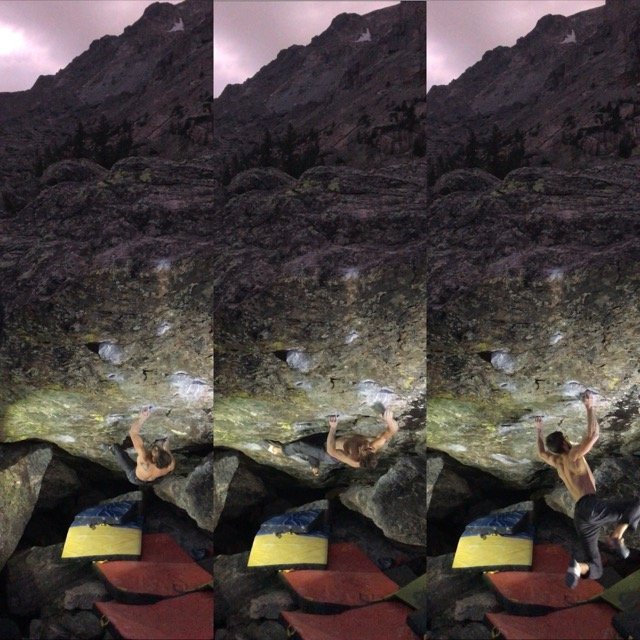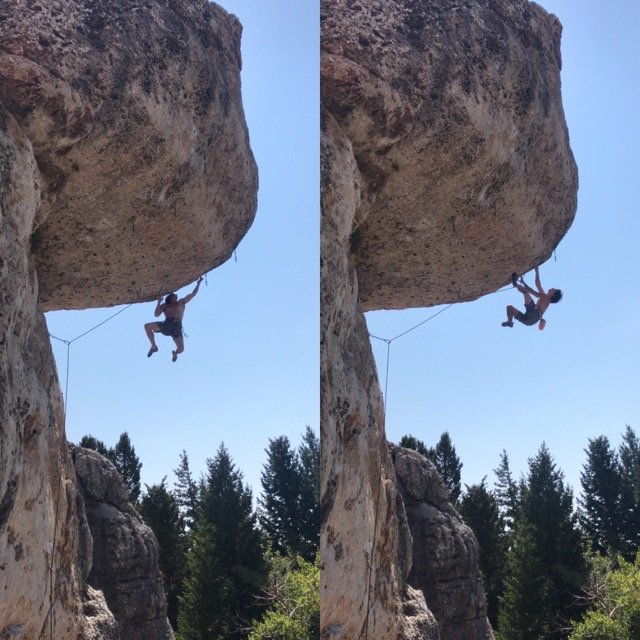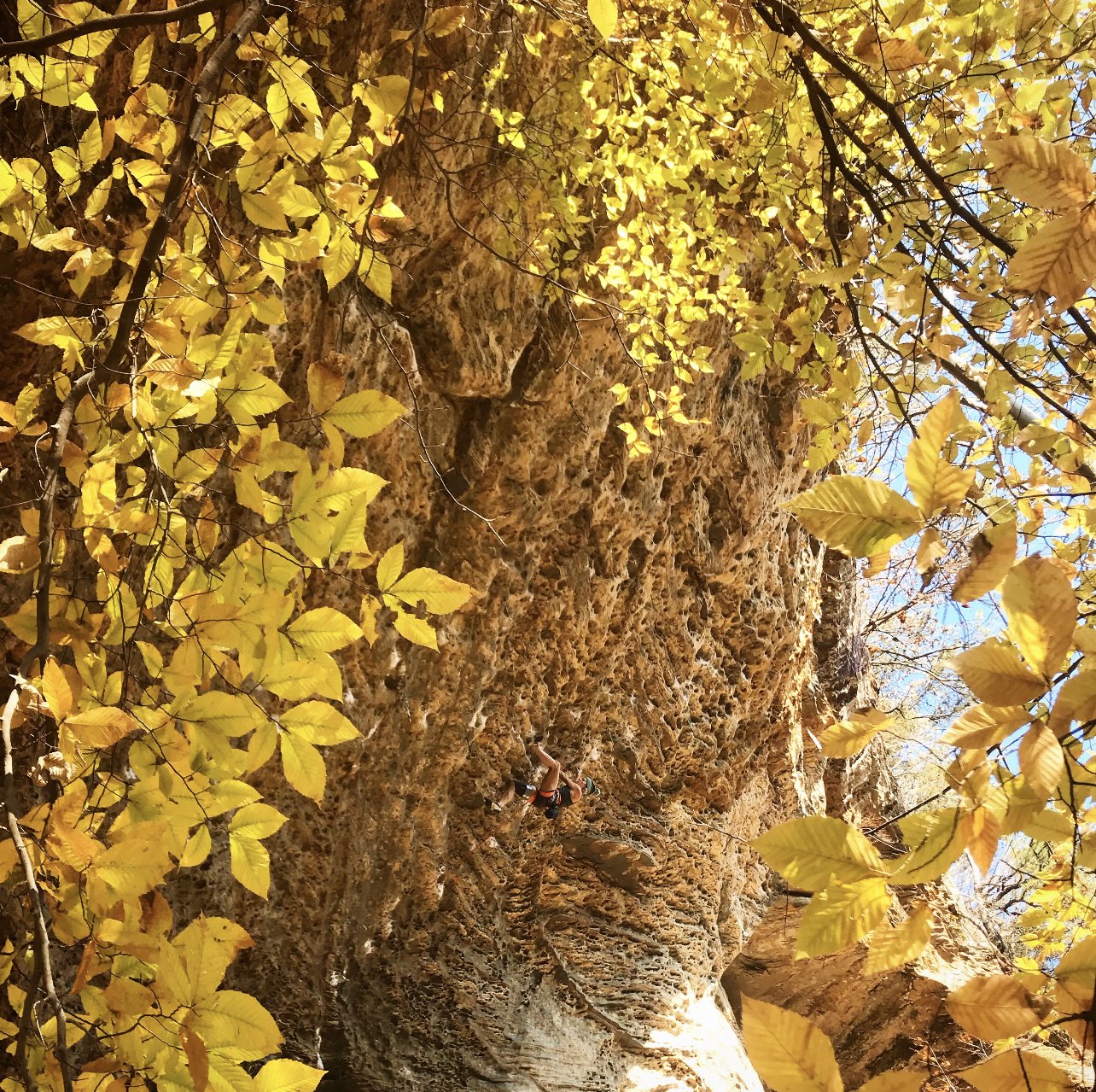10 Steps to Better Pattern Recognition
Sometimes, the difference between hours of frustration and quickly unlocking a challenging sequence comes down to where you’re standing.
When trying a problem, most of us only stand directly in front of it. We analyze the moves from this frontal perspective, we rehearse them in our minds from this perspective, and we look for new solutions only from this perspective. By doing this, we are dramatically limiting ourselves.

Being able to quickly recognize familiar sequences is a crucial ingredient to harder climbing. The issue is that boulders or cruxes don’t always present themselves in the same way as each other. Even if you’ve previously done moves exactly like the one that’s stumping you right now, it might be that you aren’t seeing the similarities because of your perspective.
If you want to improve your ability to recognize movement patterns, take a walk. Start in front of the climb and take five steps to the right. Study the climb from there. Now go back to center and take five steps to the left. Reanalyze the problem from there. If you want to step further back or gain some height to look down at the climb, do that too.
Pay attention to how your brain wants to solve the problem based on which direction you look at the climb from. Sometimes moves will look significantly harder from one angle compared to another. What appears to be an impossible jump move from the right could present as a hard cross move from straight on, and might reveal itself to be an easy layback move when viewed from the left.
You have to rest between attempts anyways. You might as well take the time to get a better look at what you’re trying. It might turn out that you’ve already solved this problem before.
If you feel like no matter how many different perspectives you get you regularly struggle to solve challenging sequences you should look into our course of movement fundamentals The Shape of Power. In it, we use video tutorials and discussions to break down the core mechanics of climbing movement and teach you how to incorporate them into your own climbing.

Long-time friends Nate and Ravioli Biceps discuss lessons they’ve pulled from video gaming that can help inform our climbing.
I never thought I’d be recommending this, but some of y’all should be putting less effort into becoming technically better climbers.
Do you really have terrible willpower? Or are you surrounded by distractions and obstacles?
Giving artificially low grades to climbs increases their perceived value for our training and development. The more something is mis-graded the more we naturally want to prioritize it.
Discussion around grades can be so polarizing that many of us avoid the topic.
Climbing starts off as this self-feeding cycle that has you wishing you could climb seven days a week. What happens when this cycle stops bringing improvement though?
Use strength to leverage every other aspect of your climbing, not replace them.
If everything you do is a finger workout, then when do your hands get a chance to recover?
There is a common theme between a grilled cheese sandwich and good training advice.
The more accurately we define our problems, the more approachable it will feel to find solutions.
Maybe the most understated way of getting better is to build fallback successes into your plan.
How much time should climbers spend becoming more well rounded vs. improving their strengths?
As cool as assessments and standards are, they can easily leave people settling for “good enough” when they have the potential to do much more.
Being able to quickly recognize familiar sequences is a crucial ingredient to harder climbing.
It’s far more comfortable for us to blame ignorance for our lack of progress than it is to blame our own efforts.
Once you learn the power of good tactics it can be hard to step away from them.
Of all the people that I spoke with this year who were stuck in plateaus, many of them had the same thing in common: they climbed and trained alone.
The belief that you are getting better at climbing is one of the most important ingredients in actually getting better at climbing.
How many times have you gone up a route and felt overwhelmed, only to look back and realize that it’s not as intimidating as it initially seemed?
Most of us go into a training plan or an outdoor season with an expectation, but expecting results can make us brittle when problems arise.
Whenever there is a training article online or some tidbit of knowledge on social media, it’s important that you consider the context.
At a certain stage in climbing, the hand and foot beta you use stops being the deciding factor in whether or not you are successful.
The intermediate climber’s problem with perception starts to arise when they can’t recall all of the solutions they have attempted during the problem solving process.
Being able to quickly recognize familiar sequences is a crucial ingredient to harder climbing.
At a certain stage in climbing, the hand and foot beta you use stops being the deciding factor in whether or not you are successful.
The intermediate climber’s problem with perception starts to arise when they can’t recall all of the solutions they have attempted during the problem solving process.
If you want to get the most out of your skill work and practice, being able to remember what you tried is a great first step.
































Inspiration is intoxicating, but often fades as quickly as it shows up.